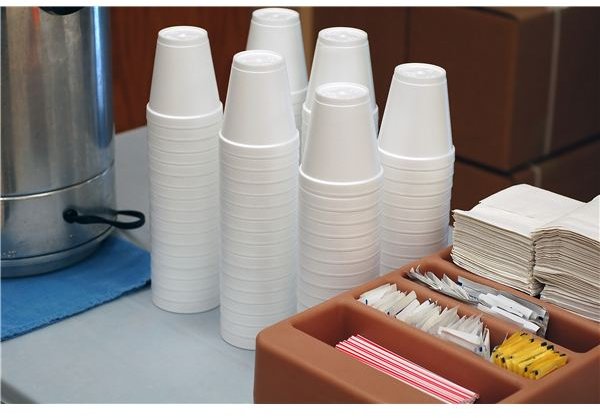Styrofoam Harming the Environment
Styrofoam Cups
Why Ban Styrofoam?
Styrofoam is not a biodegradable material. The cup tossed into the trash today will still be in a landfill hundreds of years from now, taking up to 500 years to break down. It is a product produced from petroleum, which is not only environmentally un-friendly, but also a finite resource. Styrofoam products pose a risk to lakes, streams and wildlife, when waterways get clogged by partially broken-down Styrofoam, and animals mistake it for food. It is hazardous to our own health, because when heated, it releases toxins. Any one of these problems would make a good case for a ban on Styrofoam, but combined, it actually makes one wonder why we are still using such a product.
How Big is the Problem?
The problem with Styrofoam is compounded by the fact that its usage is so widespread. In New York City alone, imagine the number of kids who pass through school lunch lines every day, getting their lunch of a Styrofoam tray. Or, the number of cups of coffee dispensed by restaurants and convenience stores. It’s no wonder Styrofoam composes 30% of our landfill waste.
Should There Be a Ban on Styrofoam?
When you consider all the negative impacts of Styrofoam, the question almost seems to not be “should it be banned”, but “when can we ban it, and how?” Styrofoam violates all three facets of environmental protection… “reduce, reuse and recycle”… since society has increased its usage over the years, reusing it is dangerous because of the toxins it contains, and it doesn’t biodegrade. For municipalities and cities, such as New York City, who are already struggling with what to do with all their waste, Styrofoam is almost an unmanageable burden. However, because its usage is so widespread, banning it outright is difficult.
What is the Opposition to a Ban on Styrofoam?
Those who are opposed to a ban cite the fact that alternatives are more expensive, and that, for example, requiring the use of paper cups instead of Styrofoam cups won’t reduce littering. But, although currently the cost of alternatives are a little higher than the cost of Styrofoam itself, that doesn’t take into consideration the vast expenses involved in the disposal of the product, and the toll it takes on our landfill capacities. People also may still litter with paper cups, but paper biodegrades, and Styrofoam does not.
What Can Be Done?
Some cities already have a ban on Styrofoam in some fashion. For example, some cities have a ban on its use for restaurant take-out containers, but have not yet banned it in grocery stores. Because its usage is so widespread, banning it is often a gradual process. But, every ban helps, and petitions and proposals to ban Styrofoam should be supported by everyone. We should be letting companies that we do business with know that we support the usage of Styrofoam alternatives, even if it adds a few pennies to the purchase price of the product. You can help spread the message by asking for your take-home food to be placed in a foil pan, or wrapped in foil, instead of the usual Styrofoam container. Filling a reusable coffee mug at the convenience store instead of grabbing a Styrofoam cup also helps send the message that these cups are not desired, nor are they needed. And, if your city or is successful in getting a Styrofoam ban on the ballot… do your part to save the environment by voting for the ban.
